Italian culture is rich with traditions and beauty. It’s no surprise that people want to eat, drink, and dress like they are from the boot-shaped country. In Italy, only the finest will do, from designer clothes to stylish footwear to teeny tiny cups of strong black coffee. In the country that gave the world the gifts of pizza and pasta, food is more than just fuel for your body; instead, it’s an edible art form to be celebrated and shared.
If you have ever traveled to Italy, then you know that one of the cool things about the country is that despite its relatively small size, each region has its own distinct specialties, like salty prosciutto and Parmesano Reggiano from Parma, dark balsamic vinegar from Modena, thin-crusted pizzas from Naples, creamy hand-stretched Buffalo mozzarella from Campania, and tangy giradinia spread from Sicily. Each region takes pride in its local delicacies, from spicy nduja salami made with Calabrian chilies to black squid ink pasta from Sicily to sizzling fried sardines.
I was lucky enough to live in Italy for a few years, and one thing that struck me was how different real Italian food is from the Americanized versions found on menus at Italian-American restaurants across the U.S. I learned that many of the original dishes made their way to the U.S. when Italian immigrants crossed the pond, and many of these recipes had to be made with American ingredients, morphing them into new variations, and creating Italian-American cuisine.
If you are curious about authentic Italian foods and wonder which Italian dishes Italians don’t eat, let’s take a look at foods that seem Italian but that you won’t actually find on any menu in the country.
If you love Italian food, you know that it pairs best with good wine, and here are 12 Wine Brands to Try.
Spaghetti and Meatballs
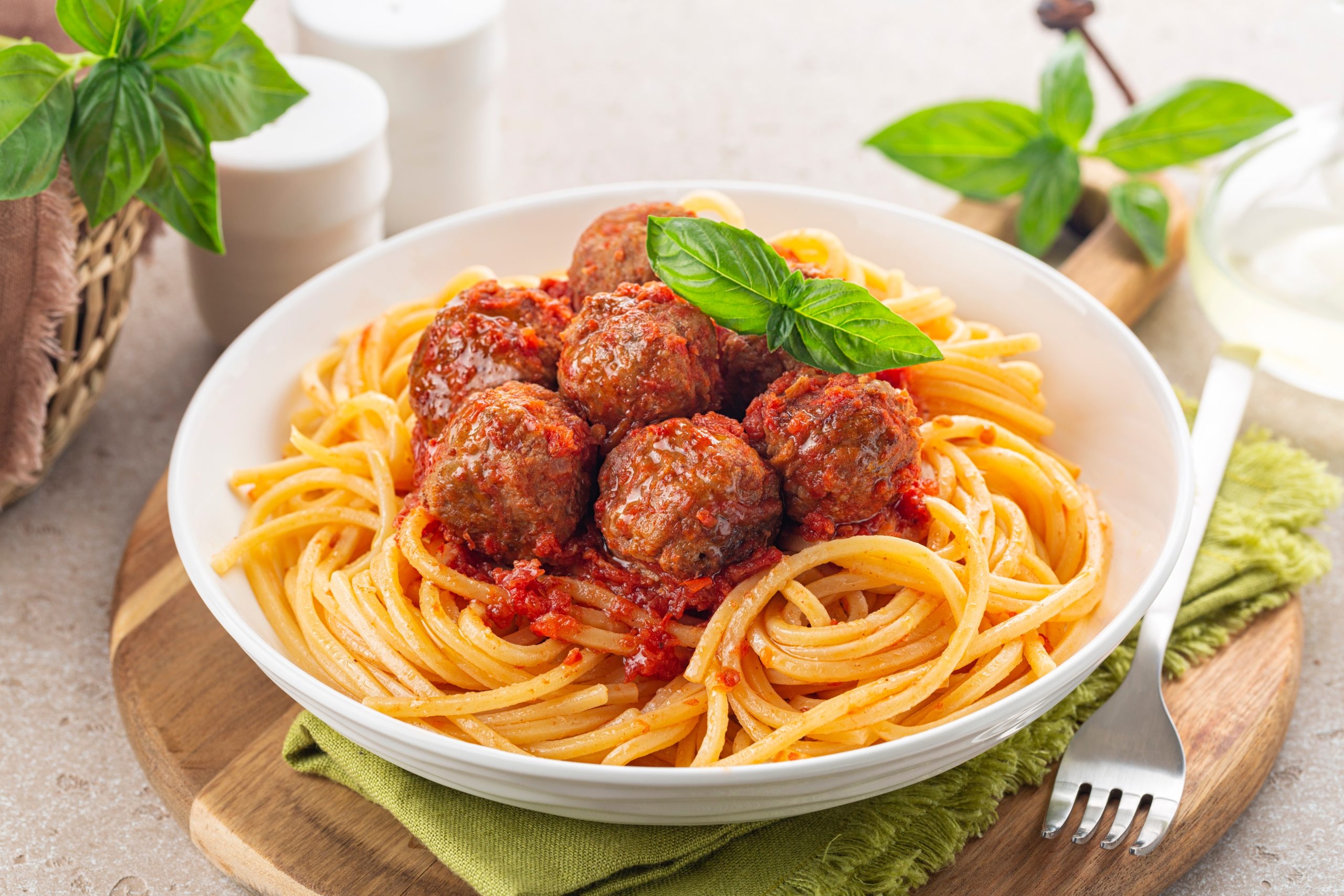
It doesn’t get any more Italian than spaghetti and meatballs, or does it? The traditional pile of pasta topped with tangy red marinara sauce and savory meatballs is surprisingly a purely American invention. Of course, spaghetti is Italian, as are red sauce and meatballs, but authentic Italian meatballs are quite different from the golf ball-sized ones on your plate in your local Italian-American restaurant.
Authentic Italian meatballs called polpette are generally smaller and never served with pasta. In Italy, the primo piatto or first plate is usually pasta or risotto, while the secondo piatto is meat or fish, so the meatballs would always be served separately from pasta and rarely with any sauce.
Pepperoni Pizza
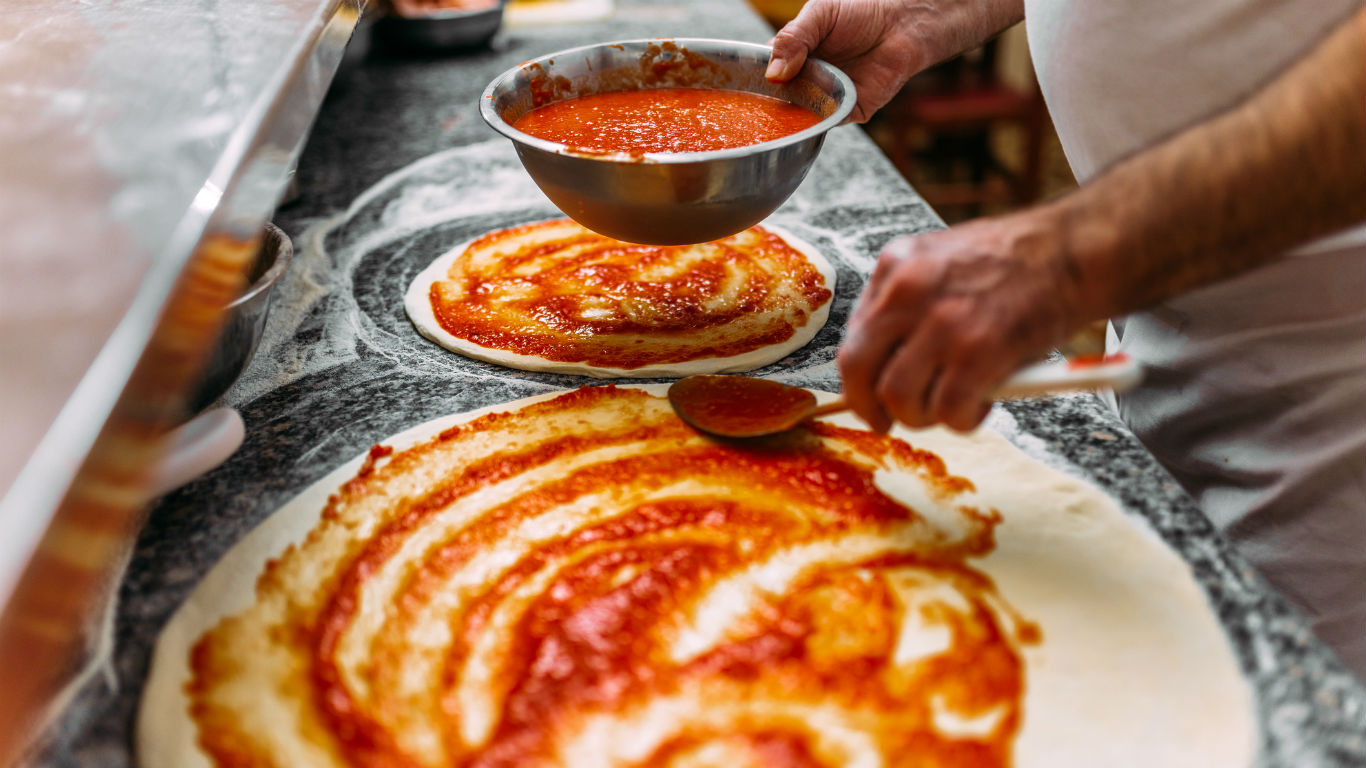
Every American pizza place has pepperoni pizza on the menu because everyone loves it. It’s the number one pizza topping in the U.S., but that’s not the case in Italy. Pepperoni is an Italian-American invention that appeared in New York around 1916. The name for the American spiced sausage comes from the Italian word for bell peppers—peperoni.
So, if you order a pepperoni pizza in Italy, you’d likely receive a pizza topped with a variety of bell peppers. The closest thing to American pepperoni pizza is salami pizza. Most Italian salami is fairly mild and lacks the spice that American pepperoni has, so another option to get that spiciness is salami piccante, which has a sharper bite.
While we are on the topic of Italian vs. American pizzas, there are a few key differences that go beyond just tasty toppings. In Italy, most pizzerias serve a thin-crust pizza that comes in one size, and each person orders their own. If you think that eating a whole pizza sounds like too much, it really isn’t because the crust is so thin, and the pizzas have fewer toppings and less cheese, making it easier for your average person to eat a whole pizza by themselves. Also, when pizza is served in Italy, it is not cut into slices like it is in the U.S. Instead, diners dig in with a knife and fork.
Caesar Salad

The decadent Caesar salad seems like an Italian dish, but it isn’t. Surprisingly, this tasty salad made with crisp pieces of lettuce covered in a tangy anchovies based dressing and served with Italian Parmesano Reggiano cheese and chunks of toasted white bread was actually created in Mexico, which is why you will never see it on a menu in Italy. However, the salad does have some ties to Italy as the inventor Caesar Cardini was an Italian restauranteur in Tijuana in 1924.
Apparently, during Prohibition, many wealthy Californians would vacation in Tijuana so they could enjoy their cocktails. One year during an Independence Day celebration, Cardini’s restaurant was low on food after having a record few days of business, and Cardini created the salad with what he could find in the refrigerator. He gave it a dramatic flair by making it tableside, like a magician delighting his guests with a show to distract from the odd mix of salad fixings.
Pasta Primavera
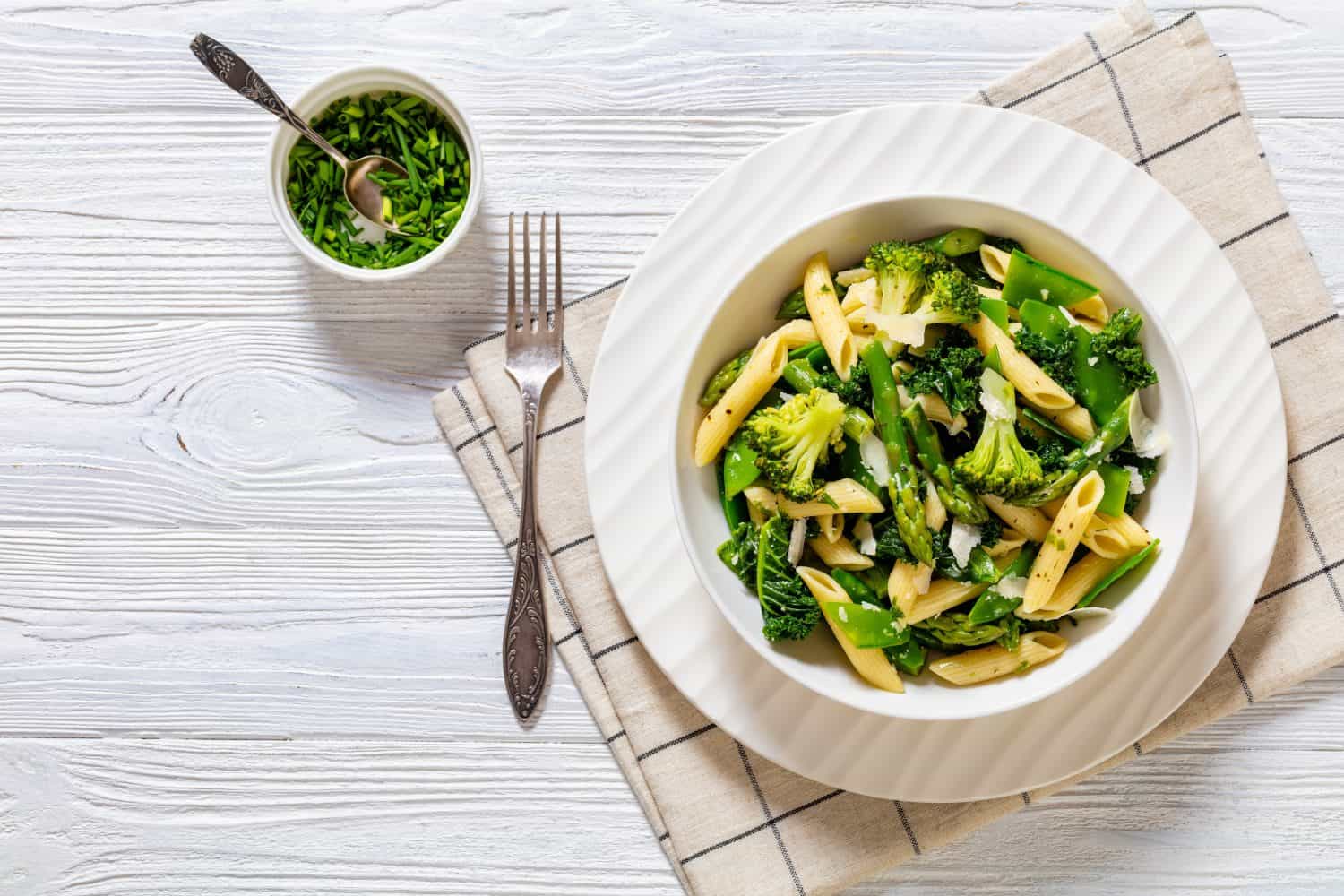
Despite the Italian-sounding name, pasta primavera is not actually an Italian dish. But primavera is an Italian word meaning springtime, and it is the perfect name for this pasta dish filled with spring veggies like asparagus, peas, and spring onions. This veggie-heavy pasta dish is served with a light sauce made with olive oil and sprinkled with Parmesano Reggiano. Since the veggies are the star of the show, the sauce is kept simple to let the taste of spring come through.
Although the dish was not invented in Italy and has never been on the menu there, it has ties to Italy because it was invented by an Italian restaurant owner in New York. His customers loved the simple charm of using fresh veggies, and the dish became popular throughout the U.S. but never in Italy.
Garlic Bread

Who doesn’t love thick slices of white bread smothered with garlic infused butter? Garlic bread seems Italian, but it is actually not Italian at all. Of course, bread is eaten in Italy, but not whole loaves sliced open and covered in butter, garlic, and mozzarella.
The closest thing to garlic bread in Italy is bruschetta, pronounced broo-skeh-tah in Italian. Bruschetta is made with thin slices of Italian ciabatta bread rubbed with olive oil and lightly topped with herbs or fresh tomato. The most classic version is bruschetta di pomodoro, which is just fresh tomatoes on toasted bread sprinkled with sea salt and olive oil.
Cioppino
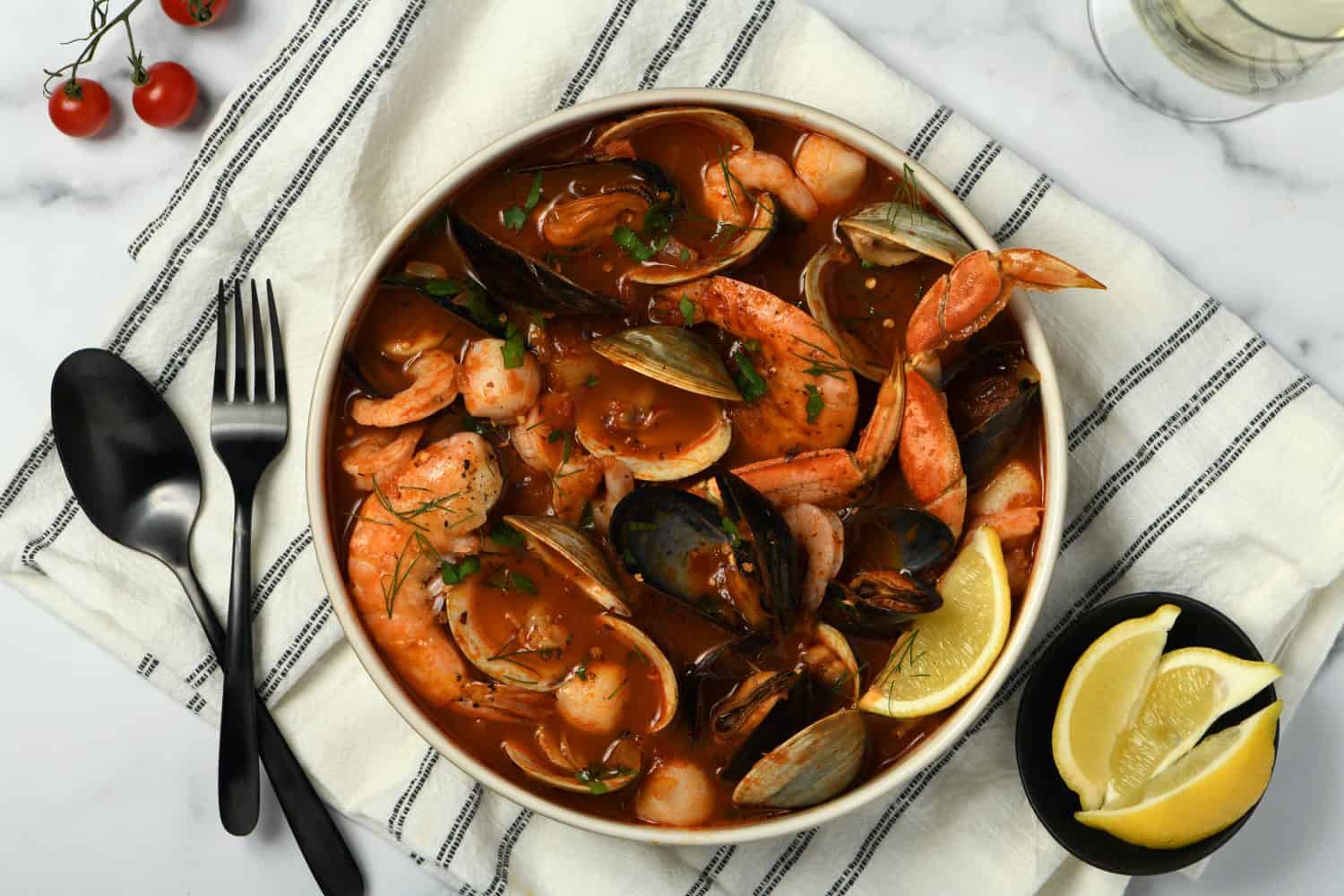
If you like to eat your seafood in a soup, chances are you have had the Italian-sounding soup cioppino. Interestingly, San Francisco’s Fisherman’s Wharf is considered the birthplace of cioppino, not Italy. Italian immigrants from coastal regions of Italy immigrated to the Bay area in the 1800s, and they brought their food culture with them. The seafood soup was heavily influenced by Italian cuisine, but it is completely different from the fish soups you find in Italy.
Cioppino, at its core, is a simple soup made with whatever seafood is available that day mixed with tomatoes and broth. The recipe is fluid and depends on what fish and seafood are fresh that day. The word cioppino is from the Italian Ligurian dialect and means chopped or torn to bits, and that’s exactly what the soup is: bits of this and that to create a meal. Throughout the years, chefs in San Francisco have elevated cioppino from a humble dish to a specialty dish.
Baked Ziti

A casserole dish of baked ziti is a satisfying comfort food. It is a mix of pasta, tomato sauce, and plenty of ooey-gooey melted cheese. It is like an Italian spin on classic macaroni and cheese. But this seemingly Italian dish is not actually Italian. The name and the ingredients are examples of Italian immigrants recreating recipes in the US, with locally available ingredients. You won’t find baked ziti in Italian restaurants, but you will find other forms of pasta, such as pasta al forno or baked pasta. These dishes are generally not drowned in heavy sauce and cheese like baked ziti.
Fettuccini Alfredo
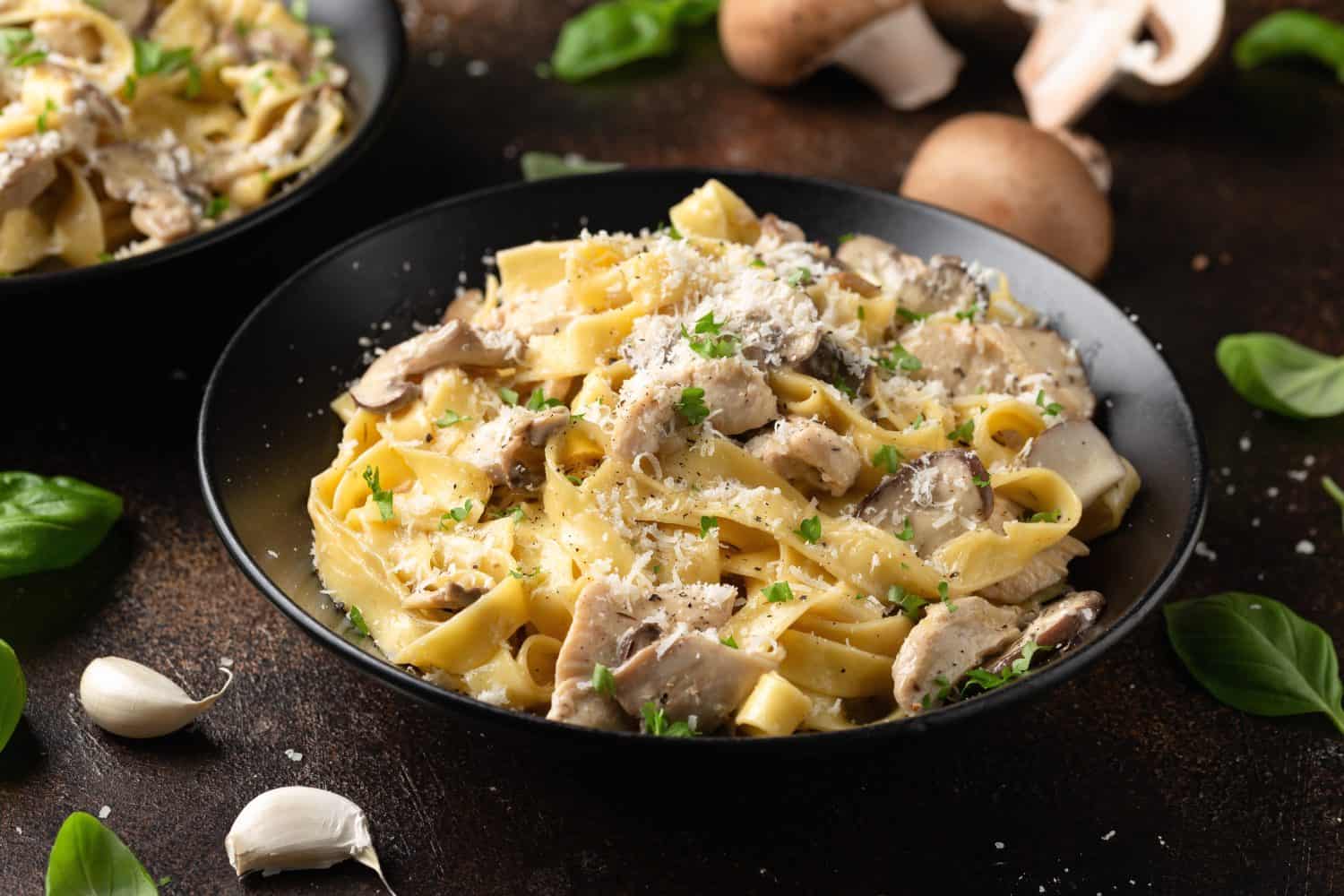
A simple cream sauce ladled over a steaming plate of pasta is the base of this dish, which was invented in Rome in the early 1900s. The original fettucini Alfredo looked very different from the one served in Italian-American restaurants today. Italian chef Alfredo kept the dish simple with just butter and aged Parmesan; he basically took the simple pasta al burro or butter noodles and added cheese.
But the Italian-American version features a heavy cream-based sauce and protein like chicken or shrimp. This over-the-top version of fettuccini Alfredo is not Italian, and you won’t find it on the menu in authentic Italian restaurants, but you might find pasta al burro.
Chicken Piccata
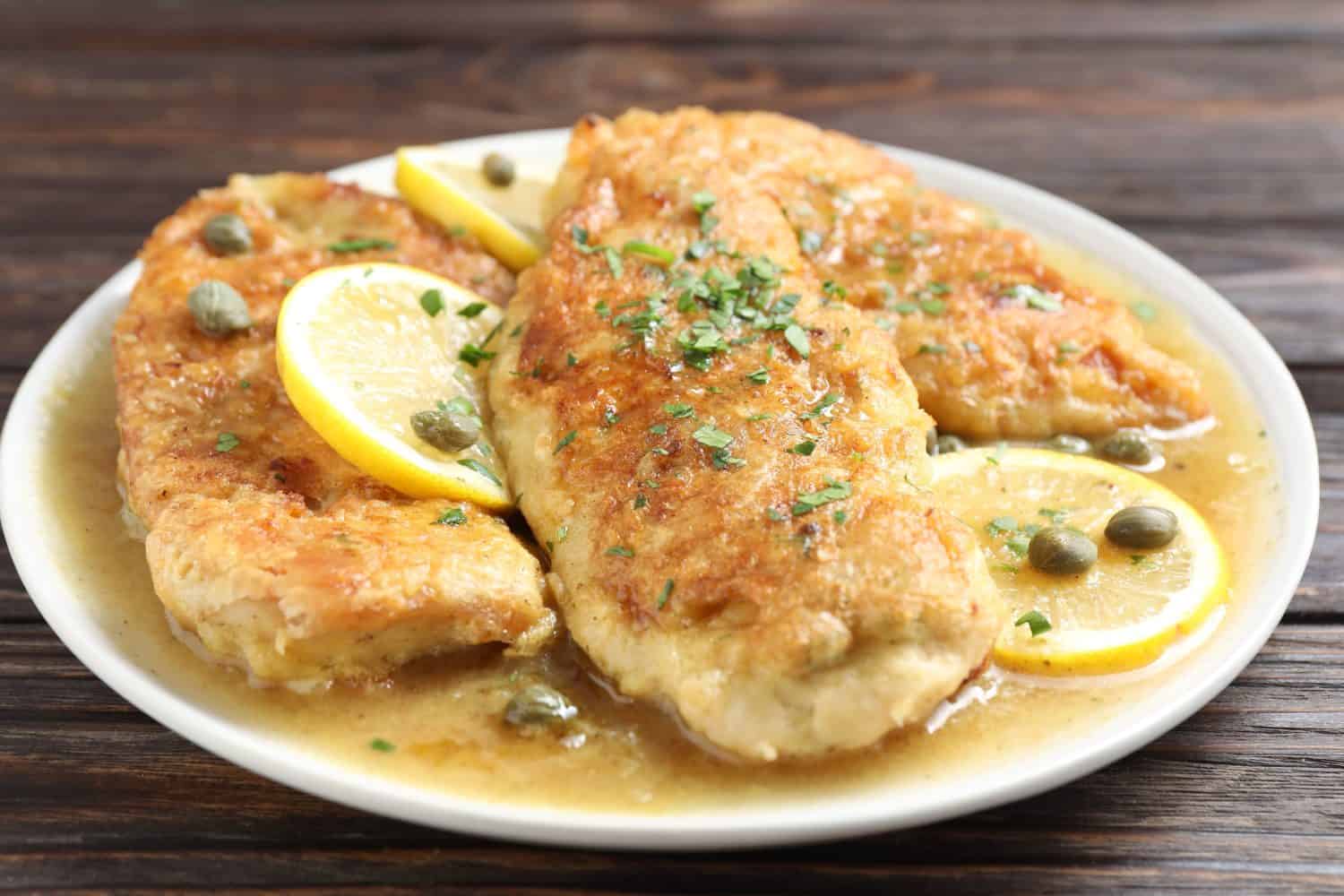
The chicken dish with the Italian name seems more French than Italian, but it’s actually an Italian-American invention. You won’t find this dish in Italy, but the flavors are uniquely Italian or, to be more precise, Sicilian. Chicken piccata is a fairly simple dish of chicken that has been pounded flat, then fried and covered in a sauce made with lemon, butter, and capers.
It probably gets confused for being an Italian dish because lemons and capers are traditional Sicilian ingredients. But the dish has never been on the menu in Sicily, possibly because chicken was expensive and not widely available. Some food historians believe the flavors were brought by Italian immigrants in the 1930s and that veal was probably used rather than chicken at the time because it was, believe it or not, cheaper. Even if you can’t find chicken piccata on authentic Italian menus, this dish is a great one for home cooks to master. It’s bright, zesty flavors make it an impressive meal.
Italian Dressing

It is not against the law to call something Italian even when it’s not, so technically, Italian dressing is a legal term, but any Italian will tell you it’s not used in Italy. Italian dressing is an American invention made with oil, sugar, and spices; it’s sort of like an Americanized version of a simple vinaigrette.
Bottled salad dressing is an American invention, and most cuisines, including Italian, French, and other Mediterranean cuisines, dress salads with a mix of olive oil, lemon, and salt. In many regions, olive oil and vinegar are on the tables for diners to add to their individual salads. Only in the U.S. supermarket will you find whole aisles dedicated to premade bottled salad dressing. However, despite false advertising, Italian dressing is not Italian, but many consumers don’t care as it’s still one of the top salad dressings sold to consumers in the U.S.
Lobster Fra Diavolo

Whenever the word diavolo or diablo is part of the name of a dish, you can be sure that it is spicy and will light a fire in your mouth. Lobster fra diavolo is one of those dishes. It’s a spicy seafood dish made with lobster in a spicy red sauce served with pasta. Despite the Italian name, the dish is an Italian-American invention from a New York restaurant. There are several restaurants that take credit for the spicy seafood recipe, the earliest dates dating back to 1908.
The key reason that lobster fra diavolo is not Italian is that it uses Maine lobster, which isn’t found in Italian cooking. In addition, most pasta sauces are not spicy. The exception to that is in Calabria, where the hot Calabrian chili is used in regional dishes.
If you have never had lobster fra diavolo and you like spicy seafood dishes, it is definitely worth trying. Many Italian-American restaurants serve it with the lobster still in the shell, making it a deliciously messy dish, so be prepared to roll up your sleeves and get ready to work for your meal, cracking the lobster shell and digging out those flavorful pieces of meat. If you prefer to eat this in the privacy of your own home, like I do, you can find an excellent recipe for lobster fra diavolo from a well-known East Coast chef who knows his way around a lobster.
While the dish isn’t Italian, you can find lobster dishes in Italy, but they are made with langostini, which look like a cross between lobsters, prawns, and crayfish. These are often grilled and served with garlic and butter.
Stromboli
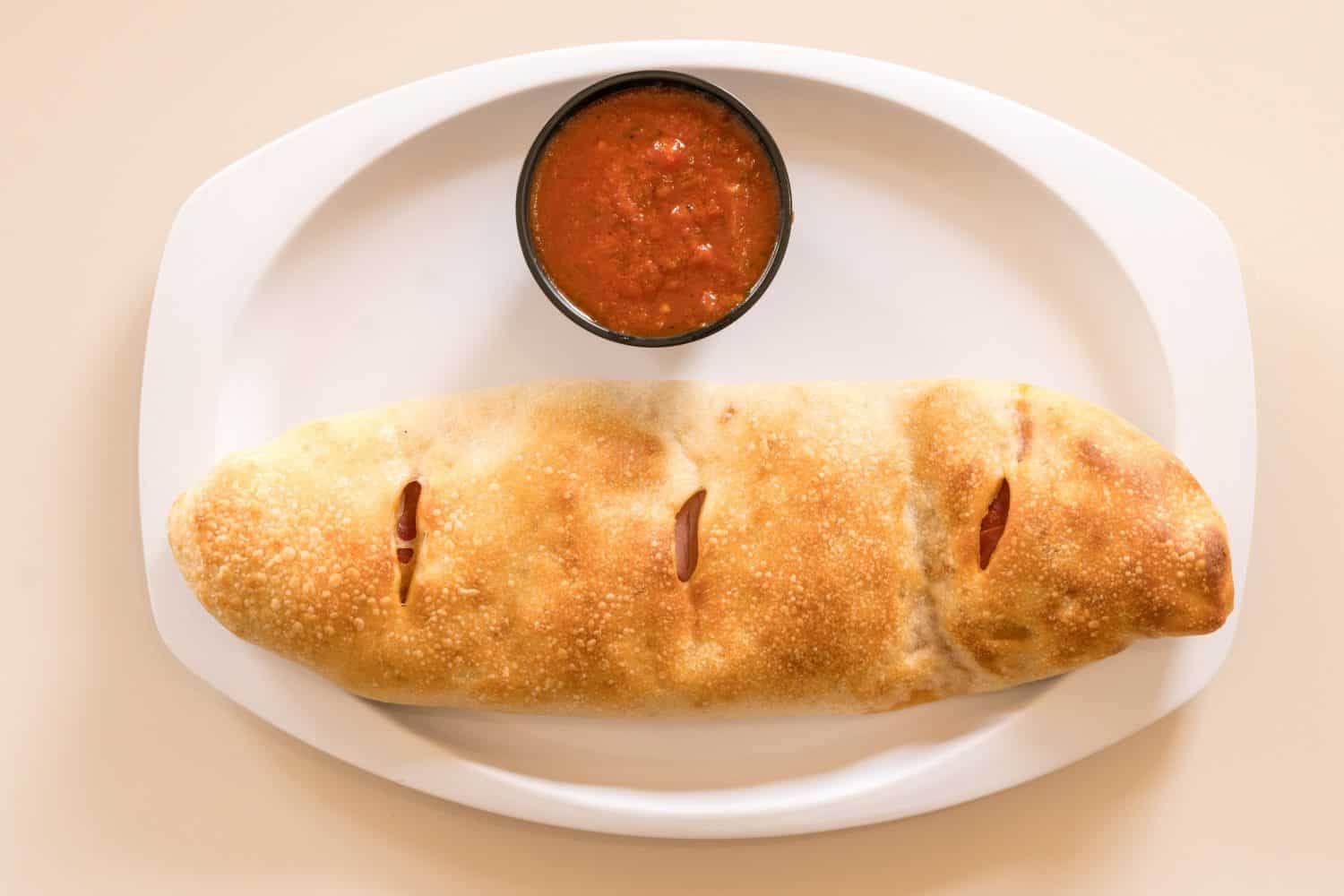
Stromboli is a cousin to the Italian calzone, making it a second cousin to pizza, but stromboli isn’t an authentic Italian food. Pizza came first and was created in Naples in the early 1800s. It was a simple food sold in street stalls. The calzone, which is basically a folded-over pizza, was created as a way to eat a pizza while on the go. The calzone has the same dough and fillings as a pizza; it’s just folded over to be carried and eaten with one hand.
Stromboli was an invention of Italian immigrants that made its appearance in on the food scene in Philadelphia in the early 1950s. It is made with pizza dough that has been stretched into a rectangle and then filled with sauce, ham, cheese, and other goodies, folded into a log, and then sliced to serve. Traditionally, stromboli has ham or other similar meats like coppa, speck, or prosciutto, but stromboli can have any combination of ingredients from peppers to olives to mushrooms to whatever your imagination can think of to put in it.
Italian Wedding Soup

If you have ever been lucky enough to attend a wedding in Italy, you may have been surprised to find that Italian wedding soup is not actually served at weddings. Instead, this soup is an Americanized version of minestra maritata, which is made with vegetables and bits of leftover meat. The confusion is because of how it was translated; the wedding is between the meat and vegetables and not actual people. The soup was a staple meal combining a little bit of everything available and, depending on the household, it may have escarole, Swiss chard, carrots, onion, celery, potatoes, and whatever little bits of meat were available.
When the soup crossed the Atlantic and made its way onto menus in Italian-American restaurants, it was made with meatballs and fewer veggies to accommodate American tastes. But the truly unique thing about this savory soup is that the recipe is fluid and adaptable to whatever veggies and meat are on hand.
Italian Sub Sandwiches
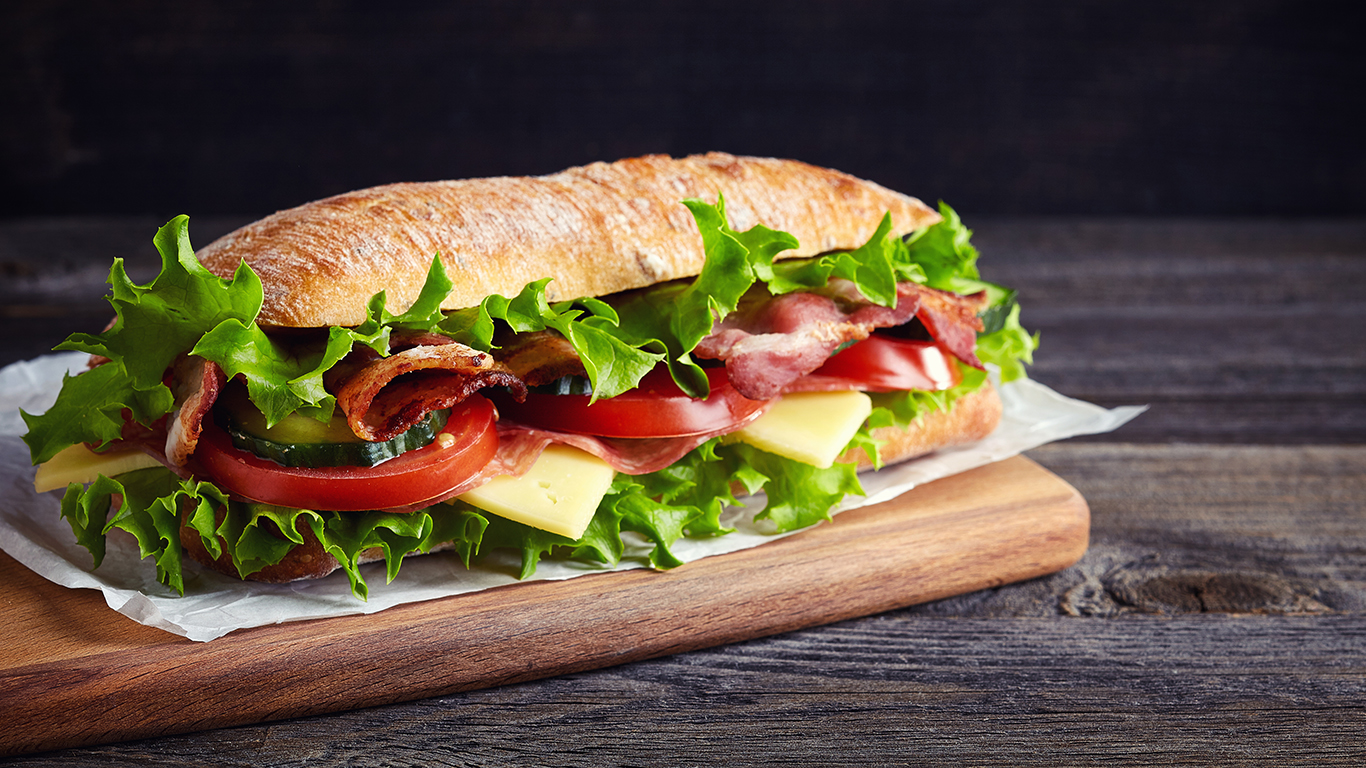
Fresh submarine sandwich with ham, cheese, bacon, tomatoes, cucumbers, lettuce and onions on wooden cutting board
If you are like me and watching the hit series “The Bear,” you have been introduced to the Italian beef sandwich and may be wondering why you have never seen this on the menu at an Italian restaurant; the reason is this tasty sandwich is not an Italian food but an Italian-American food created and popularized in Chicago. Early Italian immigrants would buy cheap cuts of beef and slowly braise them with spice until they were tender, cut them into thin slices, and serve on homemade rolls. The sandwich is usually served with sauteed peppers and onions and topped with either sweet or hot giardiniera. Some places add on a melted layer of Provolone or Swiss, but that is a modern take on the sandwich.
In Italy, sandwiches are generally not like the overfilled stuffed sandwiches that require two hands and a plate to eat. Instead, most places sell a simpler version with prosciutto and cheese on Italian ciabatta bread or between two pieces of focaccia. If you are a fan of “The Bear” and want to try the famous Italian beef sub sandwich, you need to get to Chicago not Italy.
Chicken Parmesan

I am sorry to break the news, but everyone’s favorite breaded chicken cutlet covered in sauce and melted cheese is not Italian. Instead, it is a take on the Sicilian dish melanzane alla parmigiana or eggplant parmesan. In Sicily, eggplant parmesan is made with slices of fried eggplant layers between tangy red sauce and melted cheese. Some versions add ricotta, too.
But this original dish never had meat partly because the meat was expensive, and most Sicilians could not afford it. When the recipe came to the U.S. via Italian immigrants, meat was more widely available and accessible, and the dish was transformed into chicken parmesan and even veal parmesan. However, you won’t find this heavier version anywhere in Italy.
Shrimp Scampi
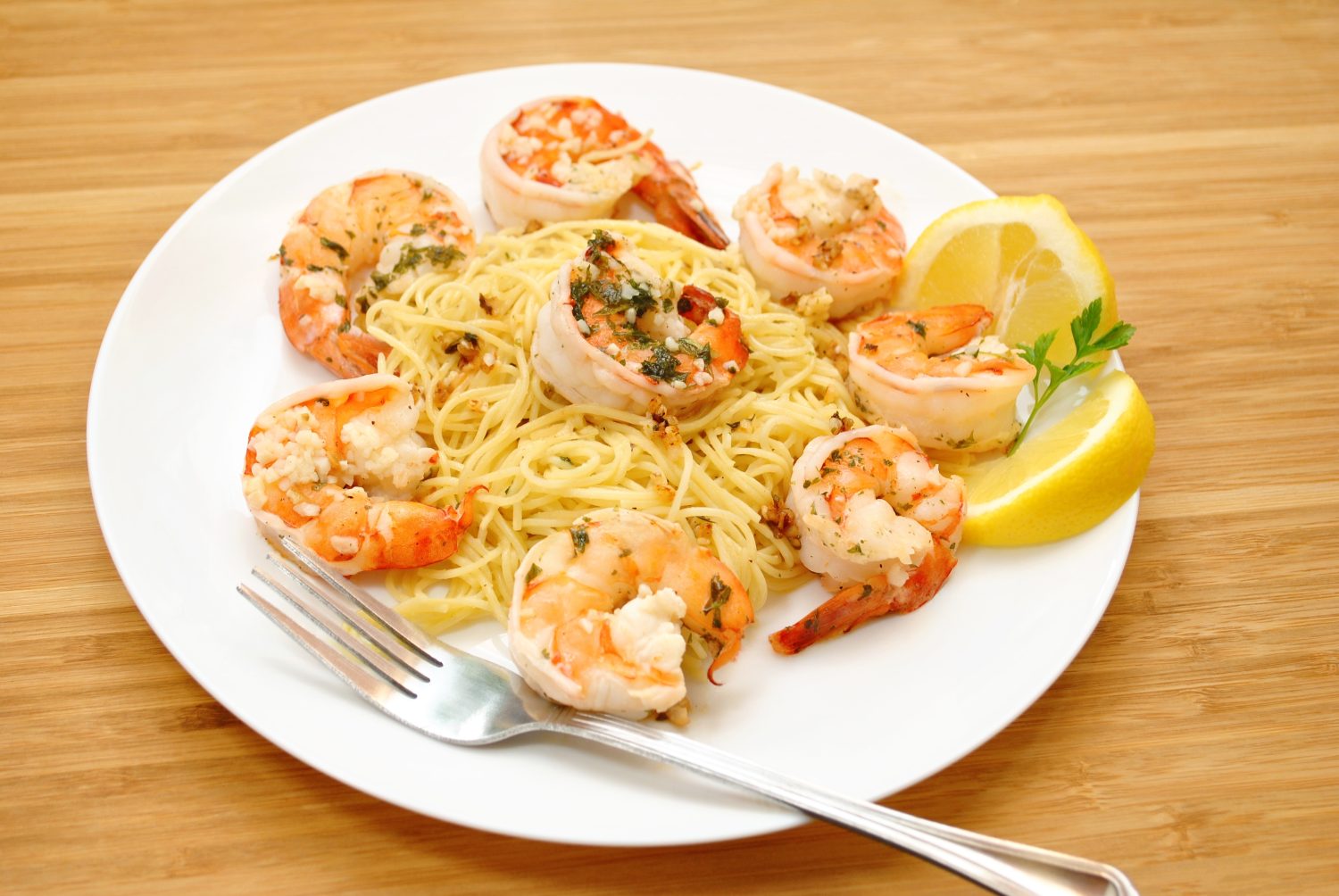
Have you ever wondered what is a scampi? Scampi is an Italian word for any type of crustacean, like Mediterranean langostini, prawns, and shrimp. It also refers to the cooking style using butter, garlic, and white wine. While shrimp scampi is on menus at many Italian-American restaurants, it is not found in Italy. In the U.S., the shrimp scampi is served with pasta. If you were to order langostini cooked in the scampi style in Italy, it would come with thick slices of crusty white bread and not pasta.
Chicken Tetrazzini

Tetrazzini sounds very Italian for such a non-Italian dish because it was named in honor of Luisa Tetrazzini, an Italian opera singer who traveled the U.S. performing in 1908. The legend goes that a hotel chef wanted to impress the Italian songstress and created this creamy pasta dish using either chicken, mushrooms, peas, carrots, and thin angel hair pasta.
The whole thing was soaked in heavy cream sauce sprinkled with slivered almonds and baked into a casserole. It is difficult to know if Luisa ever actually ate the dish with her namesake. However, the heavy dish became popular in the 1950s and 60s in America when casseroles were a huge hit. But don’t look for this in Italy because it does not exist anywhere in the country.
Oil and Vinegar Dipping Sauce
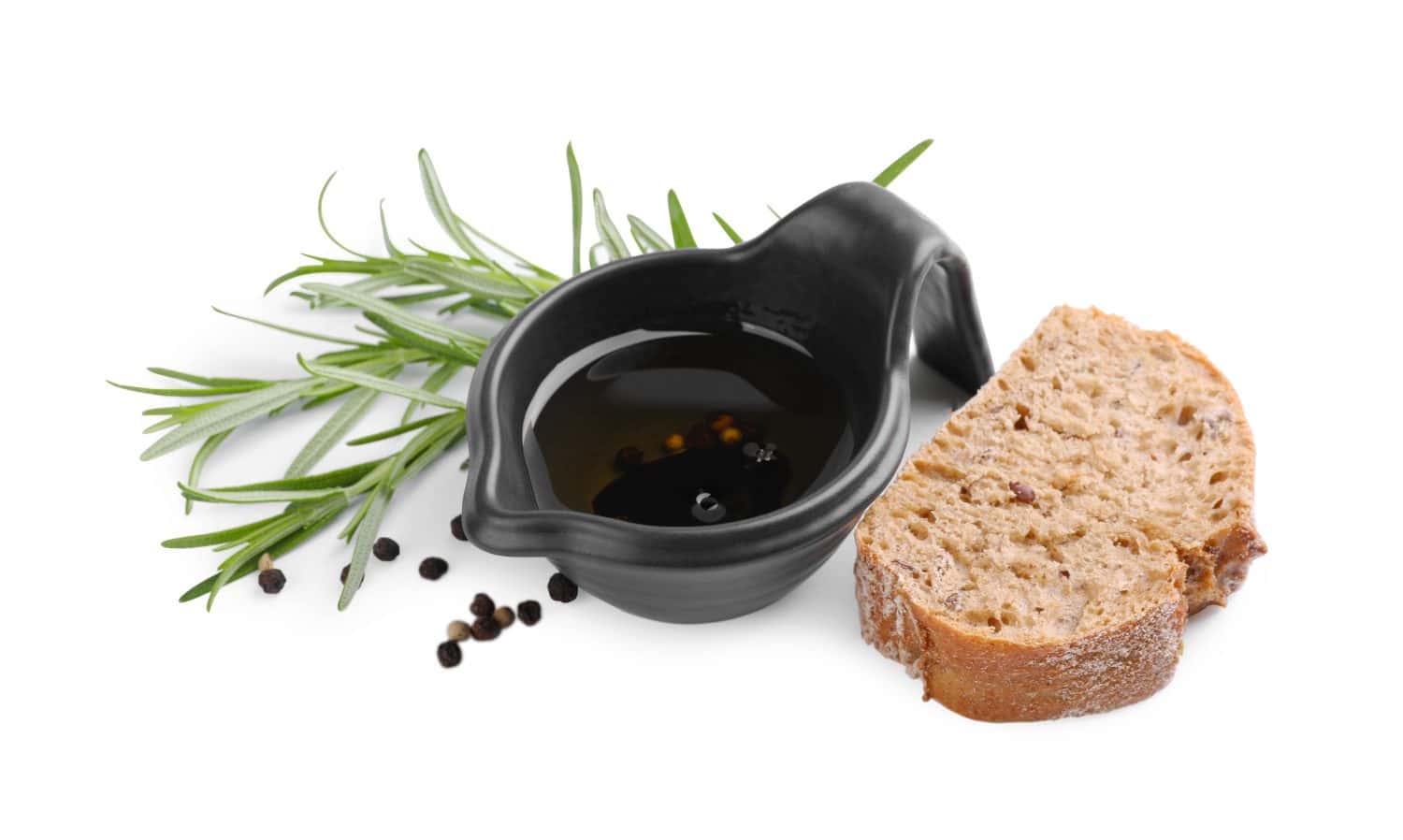
Many Italian-American restaurants serve the bread baskets with a side of oil and vinegar for dipping, but you won’t find that trend in Italy. Generally, bread is not served with butter or a tangy dipping sauce. Most Italian diners save the bread to fare la scarpetta, which translates to making a little shoe and mopping up the leftover sauce on the plate rather than filling it with dipping sauce before the meal.
Rainbow Cookies
These brightly colored festive cookies bear the colors of the Italian flag, red, green, and white, and were created by Italian immigrants. These sugar-filled cookies are popular at the feast of San Gennaro, which is celebrated in Naples. The cookies are actually cake-like with soft tri-color layers. You won’t find these cookies in Italy, but do not worry. There are plenty of tasty cookies and pastries throughout the country.
